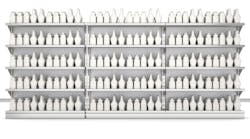Do You Treat Your Supply Chain Partners as Commodities?
Original equipment manufacturer (OEM) supply management is often characterized as being based on effective “relationship management,” a term usually left undefined. If you follow this column you’ll have read that Next Generation Supply Management relationships are labeled either strategic or non-strategic, with suppliers being designated strategic if resourcing from them would expose a purchaser to excessive cost or order fulfillment risk. The idea is that strategic suppliers are offered the same level of technical support they would receive if they were a customer’s factory department, non-strategic or not.
I’ve received all sorts of feedback on this paradigm—some positive, some negative—and have the feeling that most people feel that while the concept makes sense theoretically, it may not be practical. I’ll use an analogy from another functional area that also relies significantly on relationship management in achieving its goals to further elaborate on this idea of OEMs providing support to strategic suppliers.
At a high level—believe it or not—marketing practice parallels that of supply management. Why? Because both are based on relationship management between suppliers and customers. In the case of marketing, however, the OEM is the supplier while the customer(s) are the channels through which the OEM sells its products. Here the shoe, so to speak, is on the other foot. Perhaps by looking at relationship management from this upside-down perspective, OEMs can learn from the analogy.
First, let me contrast the two ends of the marketing spectrum relative to strategic vs. non-strategic. For the most part, if an OEM sells its products to end-use customers through Big Box merchandisers, they are considered non-strategic because Big Box stores seldom, if ever, manage anything they buy and sell as anything other than a commodity. In fact, the Big Box business model is based on treating their sources as commodity suppliers.
I’ll use construction equipment as a product category that represents the other end of the marketing relationship management spectrum since the vast majority of it is sold through brand-specific dealerships. While most construction equipment dealerships have exclusive contracts with their OEM suppliers, they are in fact independently owned, i.e., not “company stores.” But the dealerships and their OEM “suppliers” are essentially joined-at-the-hip since in reality it’s just as difficult for a dealer to switch brands as it is for an OEM to drop a dealer. In other words, both parties rely on each other for mutual success.
OEMs like to think they drive their dealer network relationship—and at one time they probably did—but today those independent dealers are at least an equal partner in the customer-supplier relationship. What does this mean? Significant effort is expended by OEMs in making sure their dealers are profitable. Dealer councils provide OEMs guidance relative to both the competition and the market and, for the most part, they are taken seriously.
Contrast this to Big Box relationship management of their suppliers. In treating their sources as commodity suppliers, price and availability are at the forefront of all sourcing decisions. Sure, you’ll see Big Box television advertising featuring specific brand names but more often than not if you watch these same ads year-to-year you’ll see a variation in the brands—or at least a variation in the mix—of what they sell. Appliances are a great example of this. If a particular Big Box store thinks it can get a better deal selling Brand X over an incumbent Brand Y, Brand Y had better sweeten the deal in short order or they will likely soon be history with their Big Box “partner.”
Similarly, Big Box merchandisers demand almost immediate product availability, regardless of what was forecast. Since the Big Box guys hold minimal inventory (only enough on hand to satisfy short-term demand), OEMs with extensive order fulfillment times—overall Manufacturing Critical-path Times—find they must hold significantly more inventory than they are used to in supporting customer fill rates. Big Box stores, in fact, penalize OEM suppliers that don’t keep their stores appropriately stocked since lack of merchandise is “lost profit.” As a consequence OEMs supplying Big Box stores often pre-build inventory to support above forecasted needs. Regardless, if the forecasts are too optimistic either in volume or SKU, the OEM gets stuck with excess inventory. This, certainly, is a far different business model than in the “old days” when brand-specific dealers pretty much took and sold whatever and whenever their OEM supplier delivered.
I’ve seen, in fact, the angst that is created when brand-name OEMs—some with existing dealer networks—start selling through Big Box stores and in doing so learn that it’s a whole new order fulfillment ball-game. Some of these OEMs adapt successfully and in doing so learn how to more efficiently support their dealer network. Others do not and consequently see their profitability suffer or can’t maintain their Big Box presence.
The point here is that if you’re an OEM buying parts and/or components from a supply base, you will likely manage your suppliers along the same spectrum as you face when dealing with your distribution channels. You can either manage your sources as commodity suppliers—as the Big Box stores do—or manage them like dealer partners. In Next Generation Supply Management the determination of whether a supplier is strategic or not is the prime directive on this decision. It is especially interesting to observe OEMs who fight-like-the-dickens—usually unsuccessfully—to gain strategic supplier status with their Big Box customers but on the other end fight all efforts from their sources to not be treated as commodity suppliers.
Of course the relationship designation is not cut-and-dry. Some suppliers currently designated as strategic see their status erode either through competition or as result of their own actions. As I pointed out in a previous column it takes two to tango and if you have a strategic supplier who doesn’t want to work collaboratively, it’s also likely that the OEM will put in place a Plan B sourcing strategy so that they can be resourced from.
I’ve see plenty of instances where strategic suppliers who felt they held “all of the cards” lose their business when their customer invested the necessary time and money to develop an alternate, more collaborative source. Non-strategic suppliers can also become more strategic through innovations in product and service. This phenomenon, too, needs to be recognized and managed.
Hopefully with the above discussion it makes more sense now towards putting in place infrastructure in support of your strategic suppliers to ensure that they—and you, in turn—remain world-class competitive. This thought is the whole idea behind supplier development and having—and paying attention to—supplier councils. Managing suppliers who are difficult to replace like you manage non-strategic suppliers aligns your business with how the Big Box stores manage their sources.
As you can see in today’s headlines—I won’t name the specific companies—over the last several years several of the Big Box boys have seen their profitability suffer. Why? Because over the long run treating all of your sources as commodity suppliers tends to make your own business gravitate towards being perceived as a commodity, at least in a competitive marketplace.
My next column will be the one I promised relative to Topper’s questions at the end of the “How Best to get Government Involved in your Business” column. Specifically it will deal with how I came to be an advocate of some sorts for government-sponsored economic development and the boundaries I put on that involvement.





